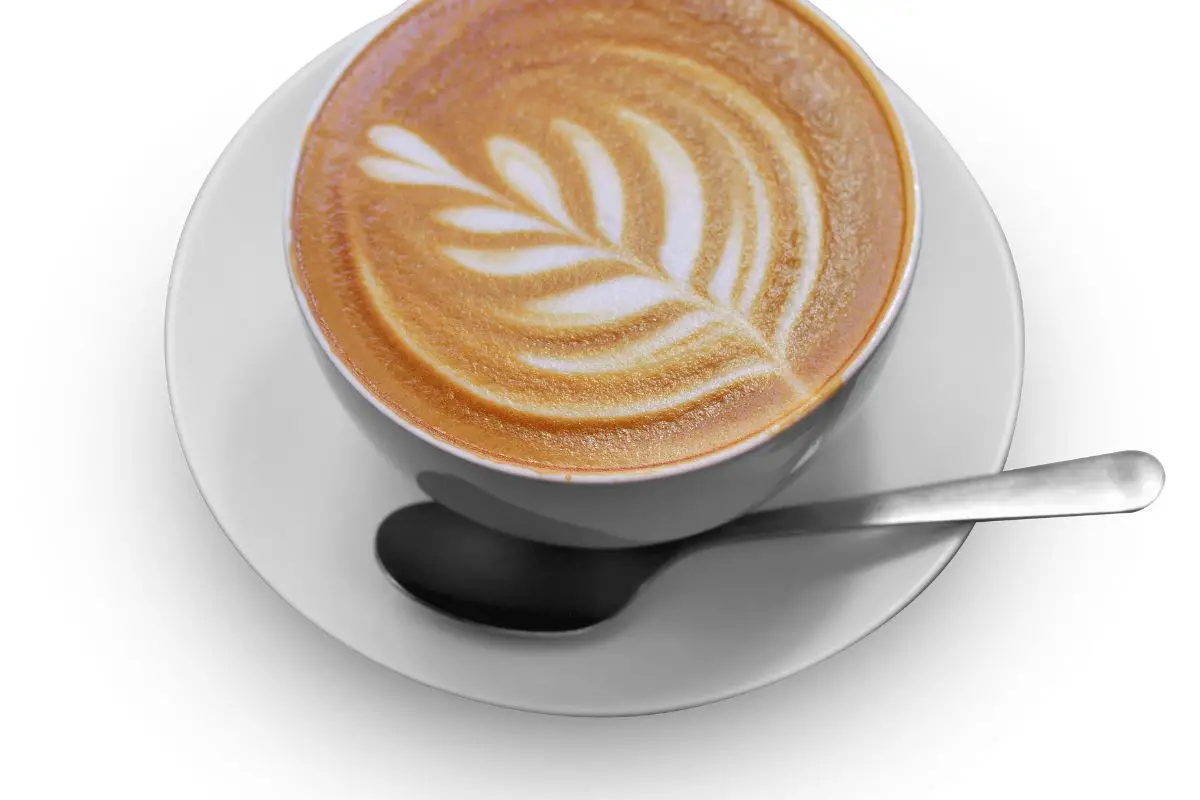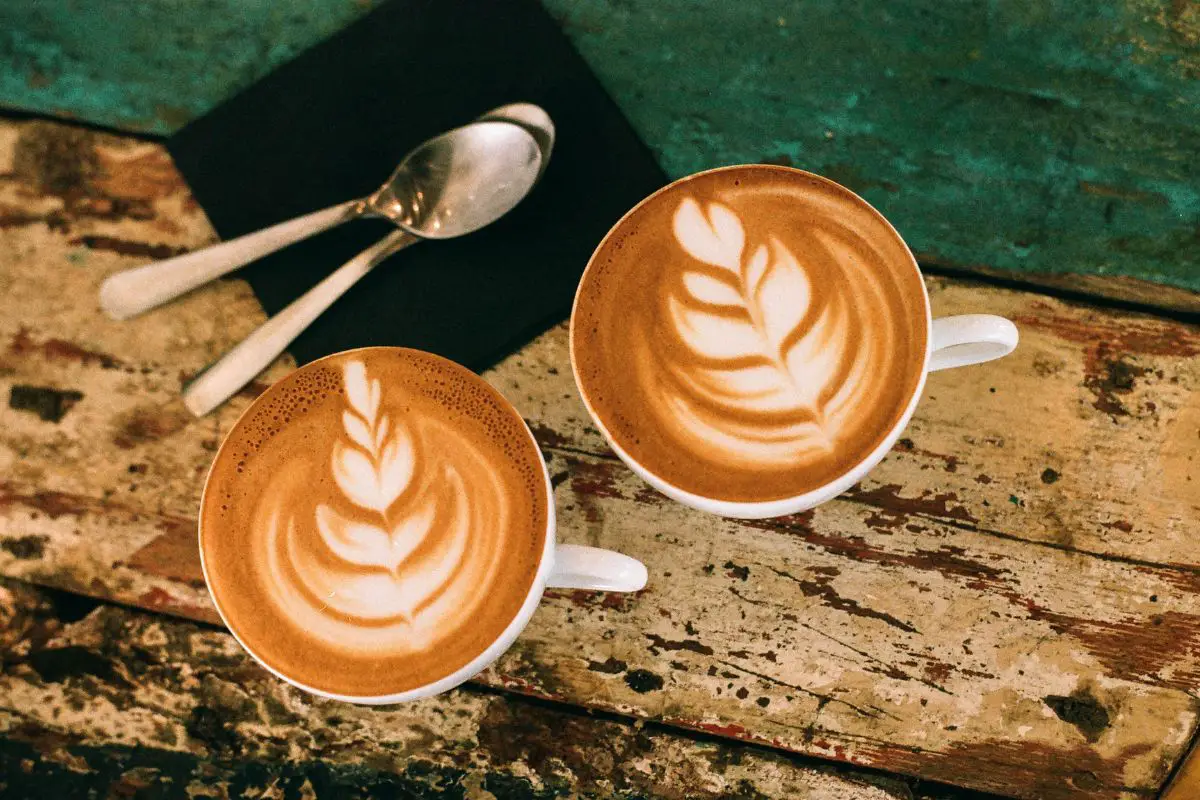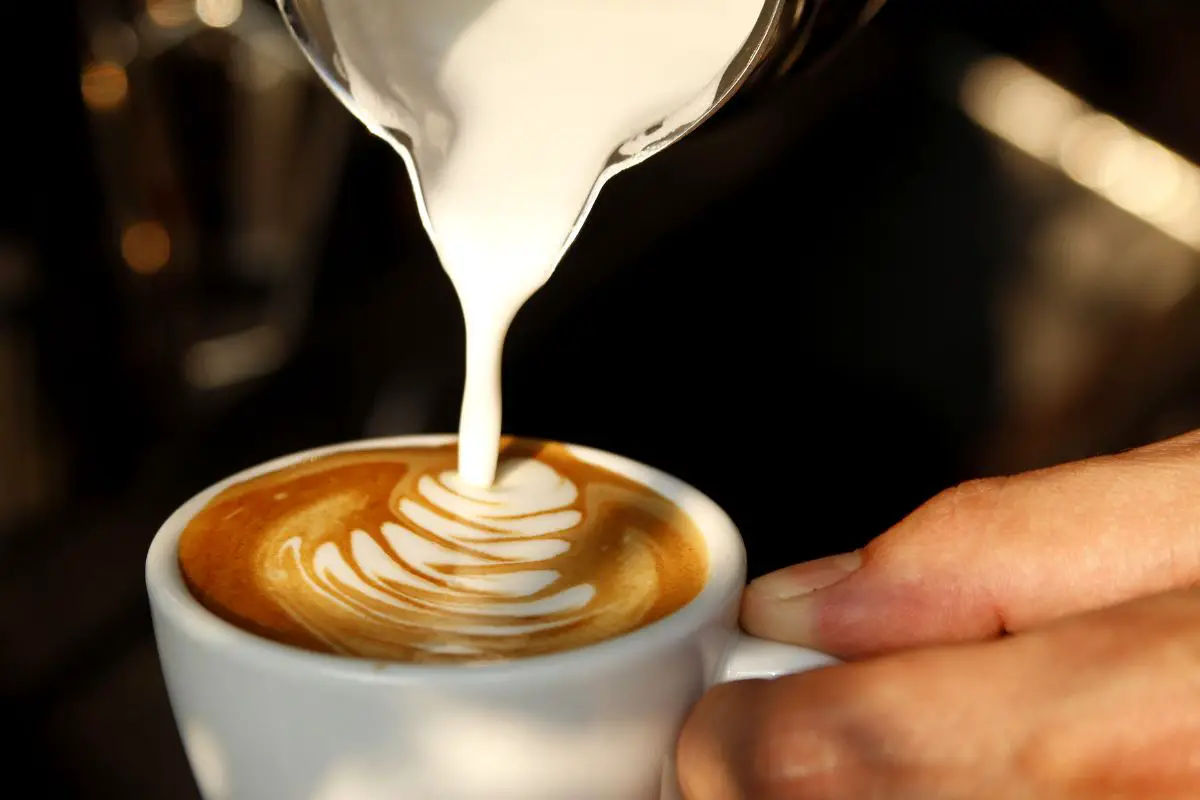According to statistics, lattes have become one of the most popular coffee beverages worldwide. However, there seems to be a perpetual debate among coffee enthusiasts regarding the ideal serving temperature of lattes. This article aims to objectively explore the question, ‘Are lattes hot or cold?’ by delving into the origins of lattes and their traditional serving temperature, as well as the rise of iced lattes and their popularity.

Additionally, we will examine the different variations of lattes and their temperature preferences, and consider key factors when choosing the temperature for your latte. Ultimately, the decision between hot or cold lattes is a matter of personal preference, but understanding the historical and cultural contexts, as well as individual taste preferences, can help guide our choices.
By providing an analytical, detailed, and informative analysis, this article aims to equip readers with the knowledge necessary to make an informed decision about their preferred temperature for enjoying lattes.
Key Takeaways
- The ideal serving temperature of lattes is subjective and depends on personal preference and context.
- Hot lattes are traditionally served and bring out the full flavors of the coffee, while maintaining the integrity of the milk.
- Iced lattes have gained popularity, especially during warmer seasons, as a refreshing and customizable alternative to hot lattes.
- Different variations of lattes have different temperature preferences, with hot lattes served around 150°F, iced lattes served cold ranging from 40-60°F, and blended lattes served cold at temperatures between 30-40°F.
The Origins of Lattes and Their Traditional Serving Temperature
Lattes, a popular coffee beverage, have their origins rooted in Italian coffee culture and are traditionally served steaming hot, with a velvety texture and a rich aroma that envelops the senses. This traditional serving temperature is achieved by combining a shot of espresso with steamed milk and a small layer of milk foam on top. The high temperature of the latte is essential to bring out the full flavors of the coffee and create a harmonious balance with the creamy texture of the milk.
The heat of a hot latte not only enhances the taste but also provides a comforting and soothing experience. The warmth can be particularly appealing during colder months or when seeking a cozy indulgence. Moreover, the hot temperature of lattes helps to maintain the integrity of the milk, ensuring that it remains fresh and free from any potential bacterial growth.
As the demand for coffee beverages evolved, so did the variations of lattes. One such variation that gained popularity in recent years is the iced latte. This chilled version of the traditional latte offers a refreshing twist, especially during warmer seasons or for those who prefer cool beverages. The rise of iced lattes has allowed coffee enthusiasts to enjoy the unique flavors of lattes in a different and more temperature-appropriate way.
The Rise of Iced Lattes and Their Popularity
The growing trend of iced beverages has captivated consumers, with a particular focus on the rise of iced lattes and their widespread popularity. Iced lattes have gained traction in recent years, becoming a staple in coffee shops and cafes around the world. The appeal of iced lattes lies in their refreshing nature, providing a cooling sensation especially during hot summer months.
An iced latte is a variation of the traditional hot latte, which typically consists of espresso and steamed milk. To create an iced latte, the hot espresso shots are poured over ice and then mixed with cold milk. Some variations may include flavored syrups or whipped cream on top. The result is a smooth and creamy beverage with a rich coffee flavor that is enjoyed cold.
The popularity of iced lattes can be attributed to their versatility and ability to cater to different taste preferences. They offer a lighter and less intense coffee experience compared to their hot counterparts. Additionally, iced lattes can be customized with various flavors and toppings, allowing consumers to personalize their drink according to their preferences.
As we delve into the debate of hot vs. cold lattes, it is essential to understand the appeal and popularity of both options.
The Debate: Hot vs. Cold Lattes

When considering the contrasting preferences for temperature in espresso-based beverages, a substantial debate arises between those who favor a steaming serving and those who find enjoyment in a chilled concoction. The debate revolves around whether lattes should be served hot or cold, with each side providing valid arguments based on personal taste and the context in which the drink is consumed.
- Personal preference: Some individuals simply enjoy the comforting warmth of a hot latte, especially during colder months or when seeking a cozy beverage to sip on. On the other hand, others find the refreshing coolness of a cold latte more appealing, particularly in warmer climates or when desiring a revitalizing drink.
- Sensory experience: Hot lattes provide a full-bodied flavor and aroma, allowing the drinker to savor the intricacies of the espresso and milk combination. Cold lattes, on the other hand, offer a smoother and more subdued taste profile, making it easier to detect subtle flavor notes.
- Practicality: The preference for hot or cold lattes may also depend on the occasion or purpose of the drink. Hot lattes are often associated with relaxation and indulgence, while cold lattes are favored for their convenience and ability to provide a quick energy boost.
Considering these factors, it becomes evident that the temperature preference for lattes is highly subjective and context-dependent. However, the debate continues, as enthusiasts of both hot and cold lattes passionately defend their chosen temperature.
In the next section, we will explore the different variations of lattes and their temperature preferences.
The Different Variations of Lattes and Their Temperature Preferences
One aspect that adds to the ongoing debate surrounding the temperature preferences of espresso-based beverages is the wide range of variations available, each with their own unique characteristics and following. Lattes, in particular, come in various forms, such as hot lattes, iced lattes, and blended lattes. These variations cater to different taste preferences and occasions.
To provide a comprehensive overview, the following table highlights the temperature preferences for each type of latte:
| Latte Variation | Temperature Preference |
|---|---|
| Hot Latte | Hot (around 150°F) |
| Iced Latte | Cold (around 40-60°F) |
| Blended Latte | Cold (around 30-40°F) |
Hot lattes are traditionally served at a high temperature of around 150°F, providing a comforting warmth. On the other hand, iced lattes are served cold, with temperatures ranging from 40-60°F, offering a refreshing and cooling sensation. Blended lattes, which are a combination of coffee, milk, and ice, are also served cold, typically at temperatures between 30-40°F. These colder variations are often preferred during warmer seasons or for those seeking a chilled beverage.
Considering these variations, it is essential for latte enthusiasts to carefully choose the temperature that suits their personal preference and the occasion. Factors such as weather, personal comfort, and taste preferences should be taken into account. Transitioning into the subsequent section, it is important to consider these factors when choosing the temperature of your latte.
Factors to Consider When Choosing the Temperature of Your Latte

Considering the plethora of temperature options available for latte consumption, it becomes imperative to analyze various factors that may influence the choice of temperature.
One important factor to consider is personal preference. Some individuals simply enjoy the taste and experience of a hot latte, while others prefer the refreshing sensation of a cold latte. Additionally, the weather and time of year can also play a role in temperature preference. During colder months, a hot latte may be more appealing, while in the heat of summer, a cold latte may be more desirable.
Another factor to consider is the type of latte being consumed. Different variations of lattes have different temperature preferences. For example, a traditional latte with milk and espresso is typically served hot, as the warmth enhances the flavors and aromas of the coffee. On the other hand, iced lattes, which are made with chilled milk and espresso over ice, are naturally intended to be consumed cold.
Furthermore, the intended purpose of the latte can also influence temperature choice. If the latte is meant to be enjoyed slowly and savored, a hot temperature may be preferred to maintain the warmth throughout the drinking experience. However, if the latte is meant to be consumed quickly or on-the-go, a cold temperature may be more practical.
When choosing the temperature of a latte, personal preference, the type of latte, and the intended purpose should all be taken into consideration.
The final verdict: hot or cold, it’s your personal preference.
The Final Verdict: Hot or Cold, It’s Your Personal Preference
Ultimately, the decision between a warm or chilled latte comes down to individual taste and preference. Both options have their own unique benefits and considerations.
Hot lattes are the traditional choice and are generally preferred during colder months or when seeking a comforting beverage. The warmth of a hot latte can provide a soothing effect, especially on a chilly day. Additionally, the heat can enhance the flavors of the espresso and milk, allowing for a more robust and aromatic experience. However, it is important to exercise caution when consuming hot beverages to avoid burns or scalds.
On the other hand, cold lattes offer a refreshing alternative, particularly in warmer climates or during the summer season. The coolness of a chilled latte can be invigorating and provide relief from the heat. Cold lattes also tend to have a smoother texture and a slightly sweeter taste, which some individuals may find more enjoyable.
It is essential to note that personal preference should always be prioritized when selecting the temperature of a latte. Individuals with sensitive palates may find the flavors of a cold latte to be more muted, while others may prefer the robustness of a hot latte. Ultimately, making a decision based on one’s own taste and comfort is crucial.
Frequently Asked Questions
How many calories are in a latte?
A latte typically contains around 150-300 calories, depending on the size and ingredients used. It is important to note that the temperature of a latte, whether hot or cold, does not significantly impact its caloric content.
What is the difference between a latte and a cappuccino?
A latte and a cappuccino differ in their ratio of espresso to milk and foam. A latte has more milk and less foam, resulting in a creamier texture. A cappuccino has equal parts of espresso, milk, and foam, creating a drier and lighter consistency.
Can I customize the flavor of my latte?
Yes, the flavor of a latte can be customized by adding various syrups, such as vanilla or caramel. This allows individuals to personalize their drink and enhance their enjoyment of it.
Are lattes made with regular coffee or espresso?
Lattes are typically made with espresso, which is a concentrated form of coffee. Espresso is brewed by forcing hot water through finely ground coffee beans, resulting in a strong and rich flavor.
How much caffeine is in a latte?
Lattes typically contain around 63 mg of caffeine per 8 oz serving. This moderate caffeine content makes lattes a suitable choice for those who desire a moderate energy boost without excessive stimulation.
Conclusion
In conclusion, the temperature at which lattes are served is a matter of personal preference. While traditional lattes are served hot, the popularity of iced lattes has risen in recent years. The debate between hot and cold lattes is ongoing, with different variations of lattes having their own temperature preferences.
Factors such as weather, taste preferences, and cultural influences should be considered when choosing the temperature of your latte. Ultimately, whether you prefer a hot latte to warm you up or a refreshing iced latte to cool you down, the choice is yours.
Related articles: